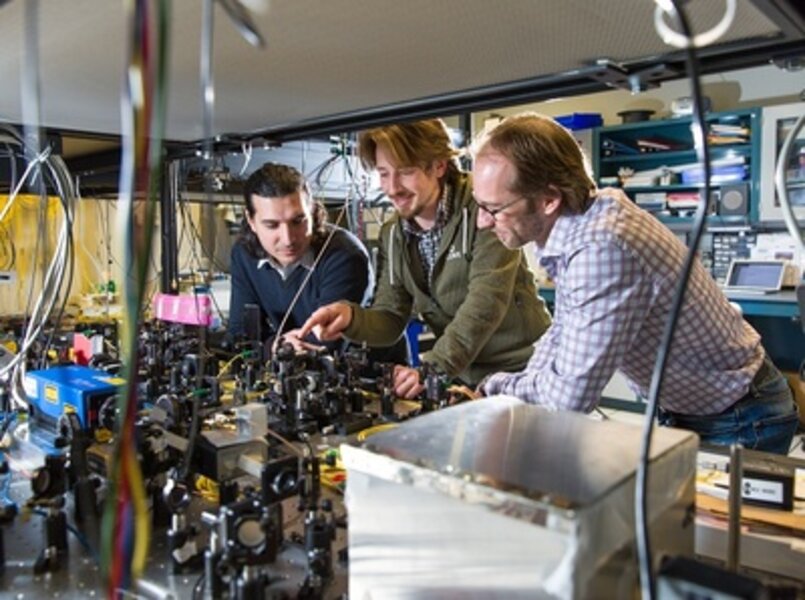How quantum teleportation could help ensure online privacy
It’s no Starfleet transporter, but it’s a start.
Physicists set a new quantum record this week, teleporting photons across several miles of fiber optic network. Two research groups, which each published findings in the journal Nature Photonics, used existing communications infrastructure to share quantum information – with no physical stops in between. The technology couldn’t possibly transport people, but it could influence the future of the internet.
“Such a network will enable secure communication without having to worry about eavesdropping, and allow distant quantum computers to connect,” Wolfgang Tittel, a quantum physicist who led the University of Calgary study, said in a press release.
Quantum teleportation doesn’t actually move matter. Rather, it instantly transfers the state of one particle to another particle with no physical connection between the two. Scientists begin by introducing a quantum state known as “entanglement” to the particles. When entangled, a change in state of one particle immediately affects the state of the other, no matter how far away.
That’s what Dr. Tittel and colleagues achieved in Calgary, teleporting photons more than three miles between the University of Calgary and Calgary’s city hall.
“Being entangled means that the two photons that form an entangled pair have properties that are linked regardless of how far the two are separated,” Tittel said. “When one of the photons was sent over to City Hall, it remained entangled with the photon that stayed at the University of Calgary.”
In Hefei, China, physicists achieved the same phenomenon, but over a distance of nine miles. By changing photon states between the two separate points, researchers can convey coded information much like a quantum computer does – by using two states of photons to replace the 0-1 binary of modern computer bits.
Physicists have achieved quantum teleportation before, but these studies are the first to integrate a quantum network into existing communications infrastructure. The demonstration, researchers say, proves that such networks could be used practically in metropolitan areas.
“You can scale the whole thing up and can go, in theory, to arbitrarily long distances,” Tittel told New Scientist.
The new studies represent a huge step forward in quantum communications and cybersecurity. On the modern internet, even wireless devices are connected by intermediate, physical data stops. On the quantum internet, devices could share information between two points without that physical send path. And without an intermediate access point for hackers to target, these communications become virtually unhackable.
“The two experiments can be seen as milestones on the path to a long-term goal,” Johannes Kofler, a postdoctoral researcher at the Max Planck Institute of Quantum Optics in Munich, told New Scientist. “Namely, to build a fibre-based quantum internet connecting large cities.”






